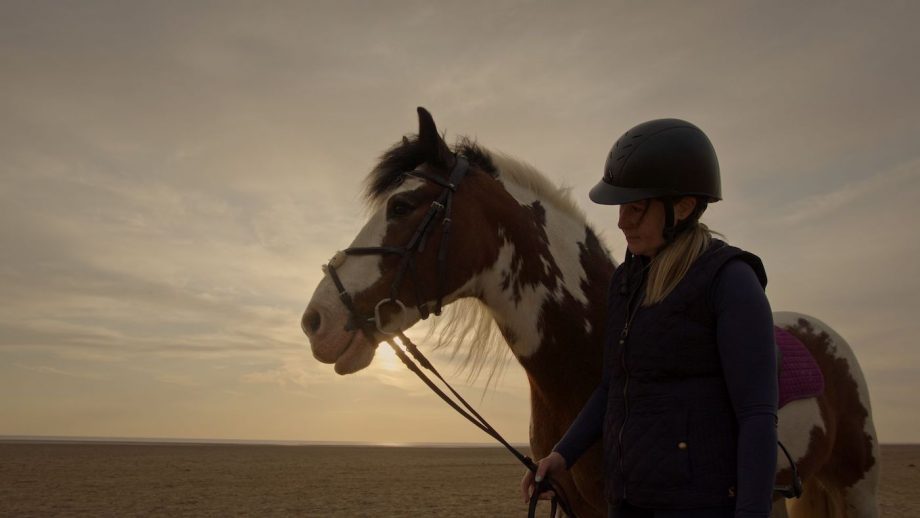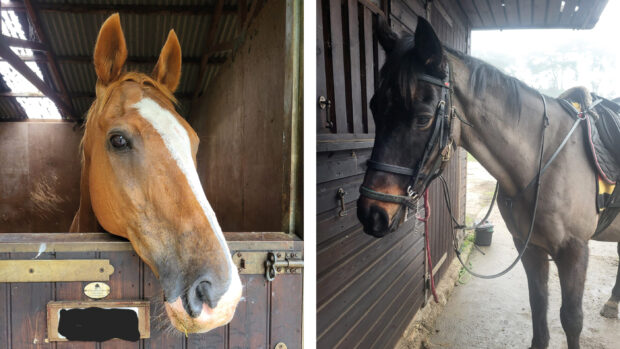A rider who lost her filly at 16 months old to atypical myopathy says that if her story saves one other equine it will be a fitting legacy to her dream horse.
Megan Carter’s part-bred appaloosa Dakota died last November, as did Finley, another yearling owned by a friend of Meg’s at the same yard.
Meg told H&H she wants to raise awareness of the risk factors of the often fatal condition to try to help others.
“I’d heard of it before last year but I didn’t know the severity, or how often it’s fatal, or that there’s no cure,” she said. “I sometimes still can’t believe what happened, because it was so quick, and so brutal.”
Meg bought Dakota last April, with the intention of eventually backing and producing the filly herself. At first she was kept on a livery yard, then she was moved to a sole-use yard with some other youngsters.
Meg said it was Finley who first showed signs of illness. He did not improve despite veterinary treatment so he was sent to Leahurst Equine Hospital.
“Dakota was absolutely fine,” said Meg. “No symptoms, eating and happy. I went to Leahurst with Finley and when we got back she was fine. Then I got a call the next morning to say she was unwell. When I arrived, she was almost dead already.”

Meg said Dakota could not stand, and was struggling to breathe and sweating.
“She was obviously in unimaginable pain,” Meg said. “My vet dropped everything but by the time he got there, all he could do was put her to sleep because she was so poorly. Finley was still in hospital but he died a few days later.”
Meg said Dakota was the first horse she had lost so her death was a huge thing to process.
“I’d planned to have her for the rest of her life; she was my dream horse in every way,” she said. “The best way to think about it is to be grateful for the time I had with her, and I want to raise awareness, and help people understand more about how the disease works.”
Issues Meg wants others to be aware of include the fact that sycamore seeds can travel a significant distance – there were no sycamore trees at the yard but after the horses died, they found a few seeds that must have blown there. At this time of year, tiny seedlings in fields can also cause issues; some owners deal with this by spraying them or running sheep on the land as they can eat them with no issues.
It is also possible to send samples of seeds or seedlings to the Royal Veterinary College to be tested, as they can have varying amounts of the toxin responsible for atypical myopathy.
“If one other person doesn’t have to go through what I did – if I can stop someone else experiencing this, I would feel I’d helped, and Dakota had helped,” Meg said. “It would be a good thing to remember her by.”
You might also be interested in:

Sycamore seedlings — what’s the risk to my horse and how do I get rid of them?

‘He saved me, now I want to save others’: heartbroken owner speaks out on fatal atypical myopathy

Subscribe to Horse & Hound magazine today – and enjoy unlimited website access all year round
Horse & Hound magazine, out every Thursday, is packed with all the latest news and reports, as well as interviews, specials, nostalgia, vet and training advice. Find how you can enjoy the magazine delivered to your door every week, plus options to upgrade your subscription to access our online service that brings you breaking news and reports as well as other benefits.



